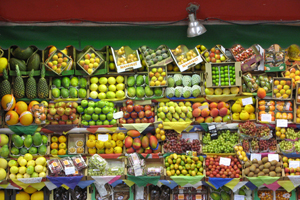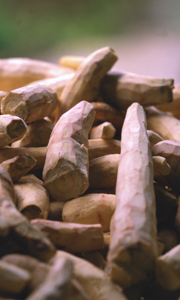Research Brief
The impact of the 2007-08 food price crisis in Brazil
The impact of the 2007–08 food price crisis in Brazil was relatively subdued compared with what took place in many other developing countries. Because the crisis potentially undermined both social inclusion and price stability, both important priorities in Brazil, the absence of any great reaction by the government is something of a puzzle.
Despite the potential of the food price crisis to undermine social inclusion—an important priority in Brazil—the government’s reaction was fairly muted
Rising food prices did reduce household welfare, hitting the poorest the hardest. However the compensating effect of income from labour in agriculture, together with transfers from government social programmes, mitigated that impact considerably
The pre‐existence of these mechanisms meant that when the food crisis hit, Brazil only had to make changes to the level of benefits, rather than having to set up a new programme
The focus on social inclusion, subject to a hard budget constraint, arose as a reaction to the country’s historic inequality, the trauma of the 1964-85 authoritarian period, and 10 years of hyperinflation (1985-94). As a result Brazil has seen a marked drop in poverty and inequality since 1995. The changes in the past two decades have been part of a transformation affecting Brazil’s society, economy, and polity. The country achieved investment‐grade status, solved its problems with foreign indebtedness, discovered extensive oil reserves, and witnessed a significant increase in the size of its middle class and the access of the poor to market goods and services. Dramatic changes in the organization of agriculture have paralleled those more general changes. Once inflation was tamed and the more intrusive government interventions in agricultural markets—such as subsidized credit and minimum prices—were removed, agricultural productivity soared practically without use of additional land. These changes have transformed Brazil into an agricultural powerhouse, among the top producers and/or exportesr of a long list of products and commodities.

Farmers and agricultural labour benefited
Because of these circumstances, only minor policy adjustments were needed when the food price crisis hit. Given that Brazil is now a major producer and exporter of agricultural goods, the price increases benefited not only large farmers, but also rural agricultural workers. Although rising food prices did reduce household welfare, hitting the poorest the hardest, the compensating effect of income from labour in agriculture, together with transfers from government social programmes, mitigated that impact considerably. This was especially true for the poorest deciles, which were thus spared the brunt of the crisis.

Social protection was already in place
Consistent with emphasis on social inclusion, Brazil had in place before 2007 an extensive system of social protection through which the government made transfers to the poorest cohorts of the population. These programmes—headed by the Bolsa Família conditional cash transfer schemes—have redistributed resources in a highly concentrated country without generating perverse work incentives or other major distortions. The pre‐existence of these mechanisms meant that when the food crisis hit the country, Brazil only had to make parametric changes to the level of benefits rather than having to set up a new programme. In the same vein, the government was able to use its networks of large public banks to increase the level of credit in the economy as a reaction to the concurrent financial crises, thereby helping to insulate consumers and the economy from potential hardships caused by food price increases. As a result the pass‐through of higher global food prices to inflation and the exchange rate was relatively limited, and endangered neither of the government’s core concerns: inflation and social inclusion. Another important feature of Brazilian agriculture in the past decade has been the size of its pioneering biofuel programme. There is much criticism that biofuel programmes contributed to the food price crisis by competing for agricultural resources. The Brazilian programme, however, is based on alcohol made from sugar cane, which is energy efficient. Given the availability of land and water, Brazil’s ethanol production does not crowd out the production of food crops.

Political institutions matter
Finally, it is useful to compare the Brazilian government’s reaction to the food price crisis with that of the Argentine government to highlight the importance of political institutions as determinants of the content and style of policy-making. Although Argentina has many geographic and economic similarities with Brazil, it has very different political institutions. In particular, Argentina lacks checks and balances over presidential power. Tellingly, the Argentine government’s reactions to the food crisis involved opportunistic price controls and intrusive export bans, which generated significant discontent and investment disincentives. In contrast, Brazil’s approach focused on promoting agricultural investment through research and innovation.
 Join the network
Join the network